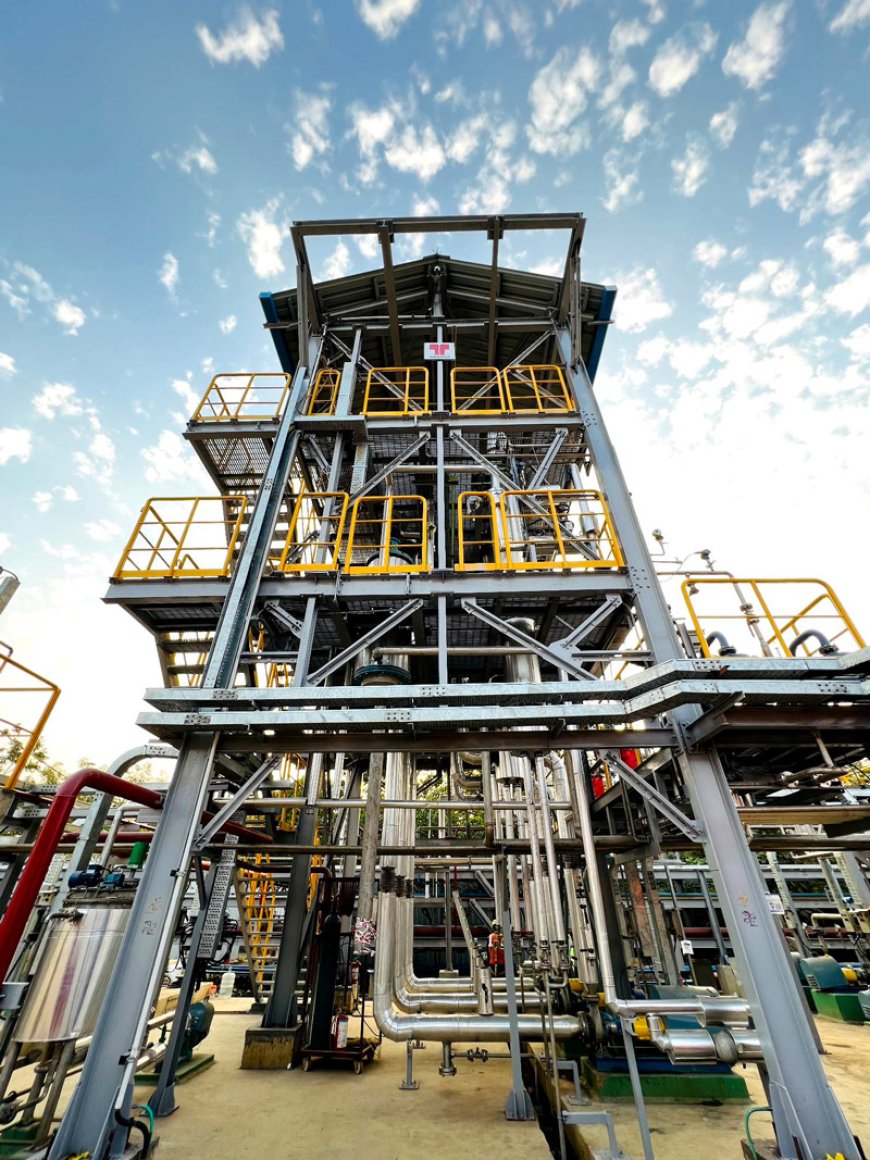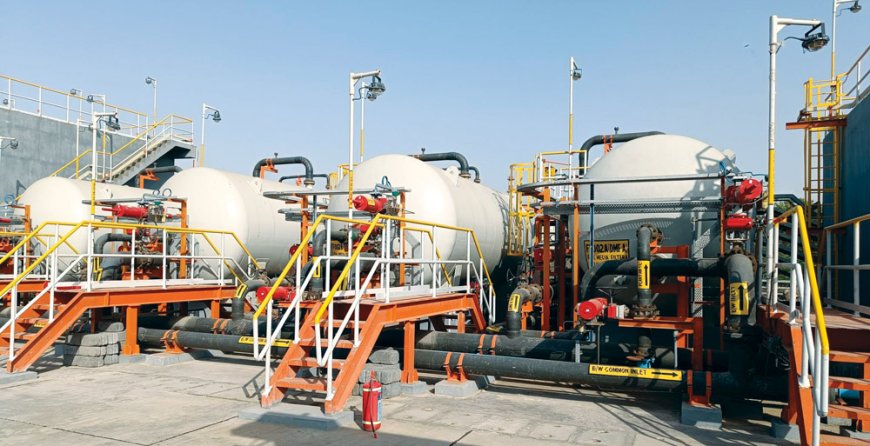Industries are putting a lot of effort on recycling to reduce the dependence on fresh water.

Vishal Mehra
SBU Head – Water & Waste Solutions, Thermax Ltd
What are the key technologies and solutions from Thermax for water recycling?
As a company, Thermax offers technologies for wastewater treatment and recycling solutions. Our industrial wastewater and effluent treatment solutions include both aerobic and anaerobic technologies. In aerobic treatment, we use a Fluidised Aerobic Bio-Reactor (FAB). To provide sustainable solutions for treating challenging, tough to degrade industrial effluents, and wastewater recycling, we sometimes combine multiple solutions based on the characteristics of the effluents for better results bundled with optimum OPEX. To meet strict effluent discharge norms, we have introduced our in-house design of zero-liquid discharge (ZLD) solutions. We offer fully modularised skid-mounted Mechanical Vapour Recompression (MVR) technology, which is prefabricated and comes with a sleek design. Since energy efficiency & optimised OPEX play a critical role in ZLD, Thermax’s unique MVR Technology requires zero external steam by using electricity as the media to establish evaporation. Customers can opt for renewable energy sources such as solar, wind, or a combination of both for the most optimal ZLD solution from Thermax.
In the commercial and residential segments, large quantities of wastewater are generated, which are treated in sewage treatment plants. For the treatment of effluent water from buildings and establishments, Thermax employs technologies based on the Moving Bed Bioreactor (MBBR). We also have sequencing batch reactor (SBR) solution with our own patented technology called SeqtreaT. Additionally, we produce our own decanters for anaerobic treatment sites and offer Membrane Bioreactors (MBR).
The treated water can be recycled and reused for gardening, floor cleaning, car washing and in flush.
Further recycling can make the sewage water into potable water. So, sewage treatment as a technology aims to give rebirth to water. We also do operation and maintenance of our products and solutions at various projects.
We have set up the new factory in Pune with an aim to preassemble the plant and make the unit modular and reduce the time at the site for customer. Another aim of setting up our new factory was to take care of the vessels and their fabrication work. With an aim to be green, we started our own fabrication at our factory and improved our quality towards greener operations. Usually external fabricators take around 6-8 weeks for fabrication of a vessel, which we do in three days. That’s the paradigm shift we have brought in the manufacturing and we don’t have any hassle in plant delivery to the customers.

Do you also have solutions in pure water for CIP applications like in pharma industries?
Pharma industry uses purified water as an ingredient where the same needs to be of the purest of quality and free of chemicals, ions and microbial load. Thermax has recently acquired a company called TSA Process Equipments Pvt. Ltd. They are into pharma high purity water systems. We manufacture plants which deliver purified water and water for injection for pharma applications. Components used to manufacture such plants are of sanitary grade with MOC of SS316L and electropolished. Output water quality of plants is complied with various pharmacopeias and stringent pharma regulatory norms. With the acquisition of TSA, we now have the capability to deal with pharma water requirements.
What is the role of Thermax in desalination segment?
Desalination is basically related to seawater recycling. Recently India has seen a lot of industrial developments in the coastal regions. A lot of pharmaceutical plants are coming up in the coastal belts. Also, there is a lot of investment coming up in the semiconductor industry, which is also a water guzzler. The major source of water for these industries is seawater through desalination. Thermax has technologies available that convert seawater into the first level of industrial water and then refine it to potable water for drinking and industrial applications. Many of the coastal areas are becoming industrial hubs and will become the future cities of India. Thermax has advanced technologies available for seawater desalination. Recently, we have completed an 18 MLD seawater desalination plant for a large pharmaceutical company. We have also executed a seawater desalination plant for a large chemical conglomerate in Gujarat. We have executed an order for a large petrochemical complex in Surat where they were using thermal desal as a technology. But now, as the thermal cost is going up, they have moved to membrane-based technology, and we have set up a 6 MLD plant for them.

What are the solutions for cities like Bangalore in meeting the growing needs of water?
For cities like Bangalore, where seawater is not available, the source is lakes. With the lake water resources are depleting, the way forward is using sewage water after recycling and treatment. Many of the residential complexes and commercial establishments have sewage treatment plants, but they are undersized and are not running properly. Thermax can revamp those plants as we have a technology where we can reduce the BOD of the sewage to the required level. We have advanced media known as PureCODeTM, which can be deployed and the water can be made available for flushing and gardening.
For cities like Bangalore, Pune and Mumbai, which are highly water-stressed, deployment of sewage recycling can be one of the options to overcome the challenge. Thermax is trying to work with some of the large developers on how we can deploy recycling technologies and give them confidence because many of them have lost confidence in this technology due to the undersized plant given by the local players. We can modify these plants to the required size and make them operational. Many developers are coming forward and partnering with us to deploy these technologies.

How challenging is the current demand-supply scenario of water in India?
The scenario is challenging. India, for its large requirement of water majorly depends on rain. The priority of rainwater is agriculture. The second goes towards human consumption, and the third priority is given to industrial consumption. The demand-supply gap of water changes with the rain pattern. The rains are not predictable anymore because of climate change. The government has played a vital role in restricting the use of fresh water for non-potable purposes and promoting the use of recycled water. Many industries are putting a lot of effort into recycling to reduce their dependence on fresh water. The situation is challenging, but the answer is there around us in the form of recycling as the solution.
What is your vision for making India water-positive?
Today, India is treating only 30 per cent of its wastewater generated while the remaining untreated effluents flow into water bodies. The government has set a target of 2070 to be energy-positive. I hope as a country we can be water-neutral by 2070 so that we see cleaner rivers around us and can rejuvenate our rivers. This can happen only if we reuse wastewater rather than direct it to the drains. Proper deployment of technology can help transform this vision into reality.







